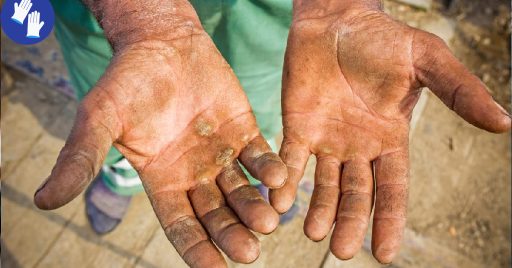Safety gloves should be considered a mandatory PPE since hands are the first tool in every job, especially physically demanding jobs. Therefore, workers must protect their own hands by wearing safety gloves. Although, unlike the other common PPE, wearing safety gloves is often neglected.
Despite Hard helmets and safety shoes, which are often used in every construction site, factory, and oil and gas operation, workers usually don’t wear safety gloves. They decline to wear safety gear for several reasons. However, during wiring, welding, cutting, and moving objects, hands must be protected by safety gloves, and reports vividly show how much wearing PPE is essential.
According to BLS, in 2015, over 143,000 hand-related injuries occurred only in the United States. It shows that these types of injuries are the second common occupational damages after back injuries. They are usually not deadly, but they make workers get days off. Besides, in severe accidents, workers must modify their work, and in many situations, they lose their income. Therefore wearing safety gloves must be mandatory wherever hand injuries can possibly happen.
Table of content
Hand injuries that can be avoided by wearing safety gloves
Hand injuries can be varied from minor bruises to severe burns or lacerations. In the following, there are some common hand injuries:
- Lacerations/cuts
Cuts are usually referred to as minor wounds, while lacerations are often more severe. Your skin can be damaged by a sharp object like a knife, a glass, or a metal strip that causes cuts or lacerations. - Crushes
Crushes can happen when your hand, arm, or wrist is caught between or within heavy machinery. In severe cases, you may lose your hand, or the damage can be permanent. - Punctures
A puncture would is usually deeper than a cut wound and occurred by sharp and pointed objects like nails. - Fractures
A fracture often happens due to a trip, slip, or crash. It is a break in one of your hand’s bone. Fractures usually need months to be recovered.

Wearing safety gloves can not protect you from all mentioned injuries, but they can avoid injuries like puncture wounds, cuts, and scrapes besides the following damages:
- Heat and chemical burns
- Hazardous substances that can irritate or be absorbed by the skin
- Extreme heat or cold
- Biological agents like bacteria and viruses
- Loss of finger, nail, and skin
- Needlestick injuries
Who is in more danger? (without wearing safety gloves)
Everyone is at risk of hand injuries, although some jobs are more hazardous than others. For instance, a worker who cuts a pipe or welds a junction is at more risk and must wear proper safety hand gloves.
Regardless of industry, age, or gender, employers must always protect their workers’ lives. They must identify hazards, provide suitable PPE, and train workers, especially new employees and younger workers who are more vulnerable to hand injuries. They are not experienced enough, and they don’t know how occupational hazards can be life-changing.
Besides young workers, employers must also ensure that workers over 55 years old are protected. People age over 55 need more days away from work after a non-fatal injury.
In what industry are hand injuries more common?
Hand injuries are common in all industries, from carpal tunnel syndrome in an office setting to chemical burns in a factory. However, working in a construction site or a factory increases the possibility of hand injuries.
Besides using small tools like a hammer at a construction site, employees must also work with dangerous machinery like a portable cutting machine or heavy machineries like a dump truck and cement mixer. Working with such machinery enhances the risk of hand injuries. Therefore, employers must provide hand gloves and persuade workers to wear them.

Why Are Hand Injuries So Common?
Hand injuries usually occur due to our neglect. Employees and employers often overlook hazards that can cause hand injuries. Nonetheless, it can be good news since it proves that we can avoid hand injuries.
In 2015, in one study, researchers asked more than 400 safety professionals to identify the main reason why they believed hand injuries occurred in the workplace. The results showed that most respondents thought that lack of personal protective equipment or cut-resistant gloves were to blame.
How to prevent hand injuries?
The answer mostly depends on the job and the industry. For an office job, hand injuries often occur due to ergonomic hazards. However, hand injuries at a construction site usually happen due to a lack of proper hand gloves. Therefore, employers must provide safety gear and monitor workers to wear safety gloves.
